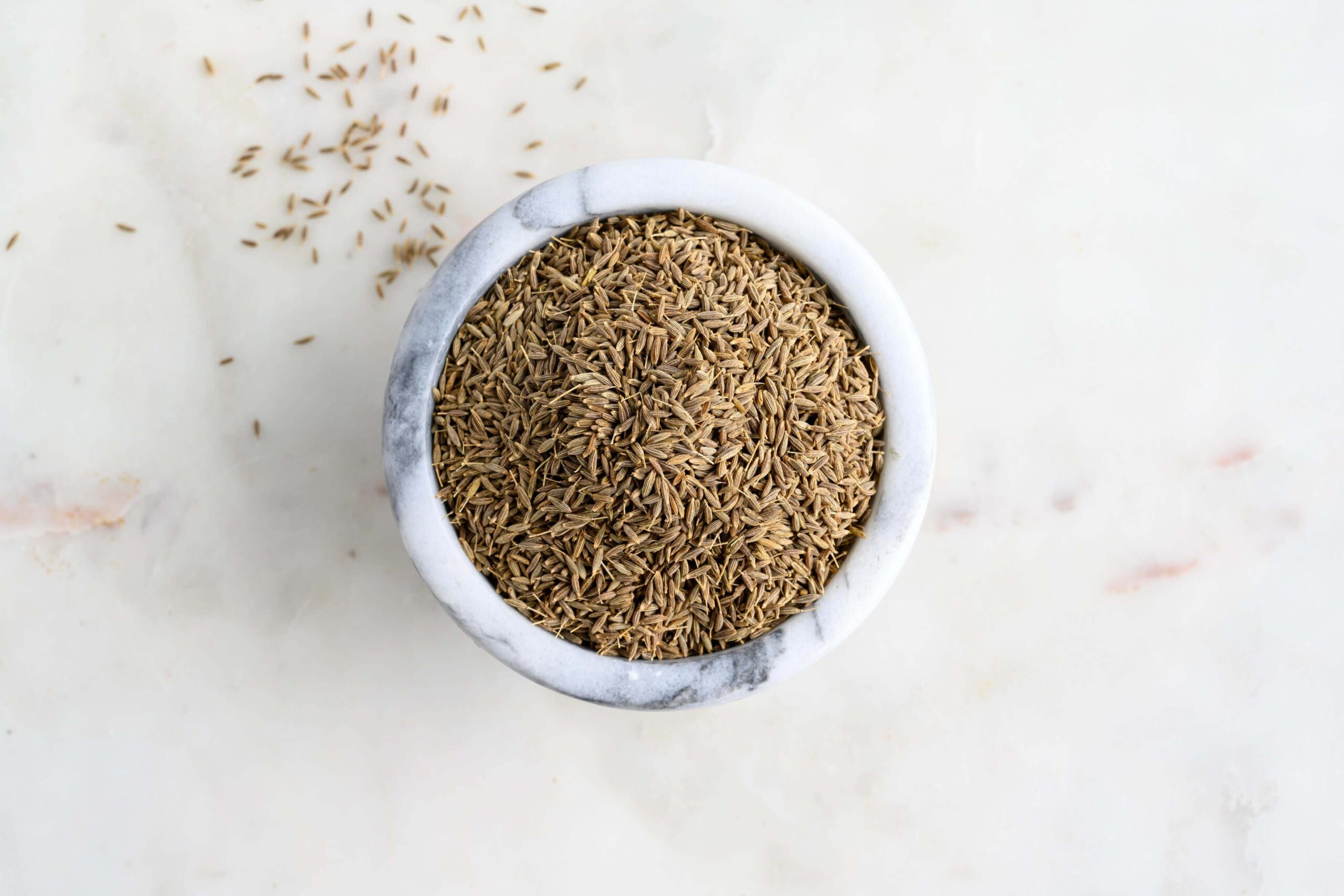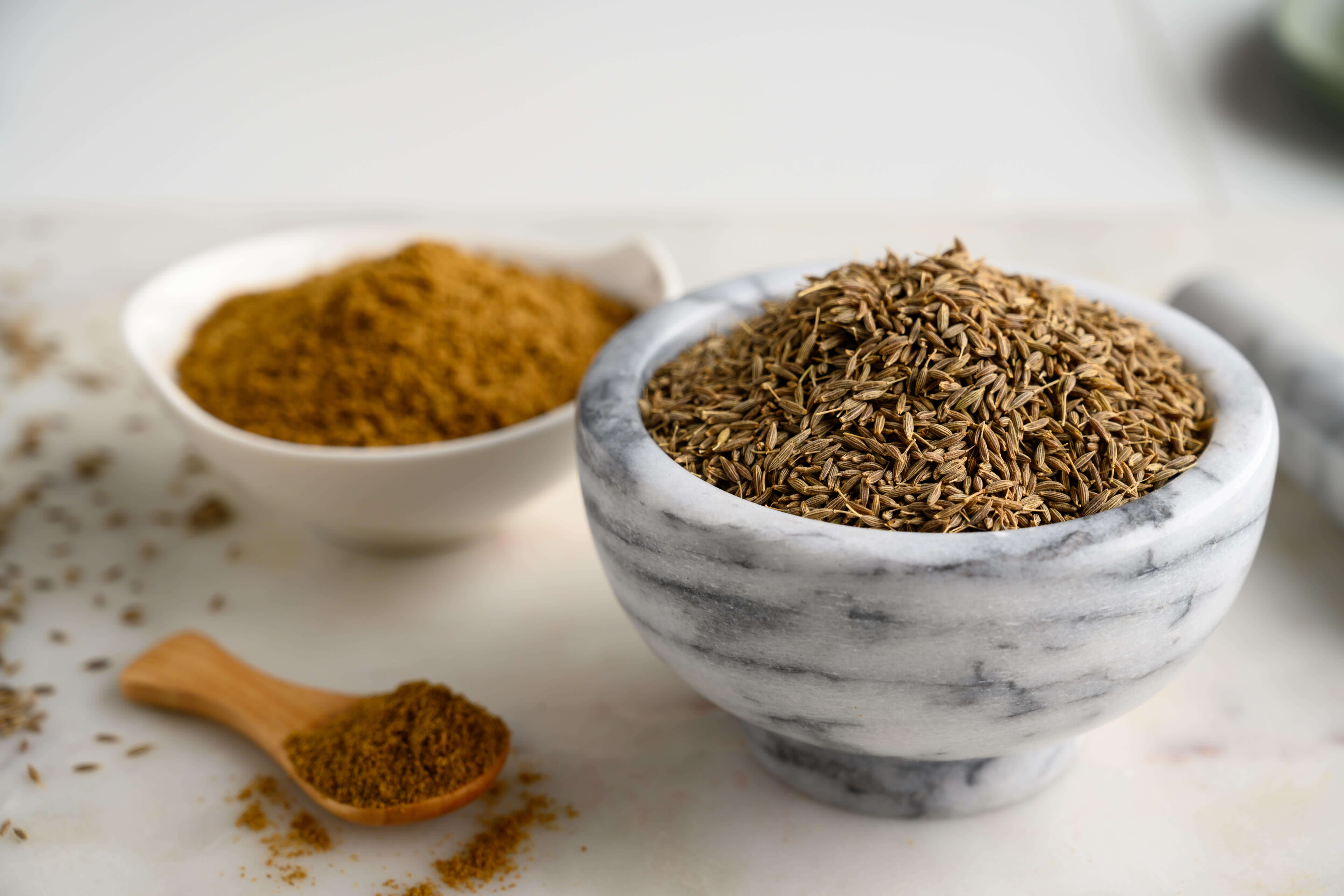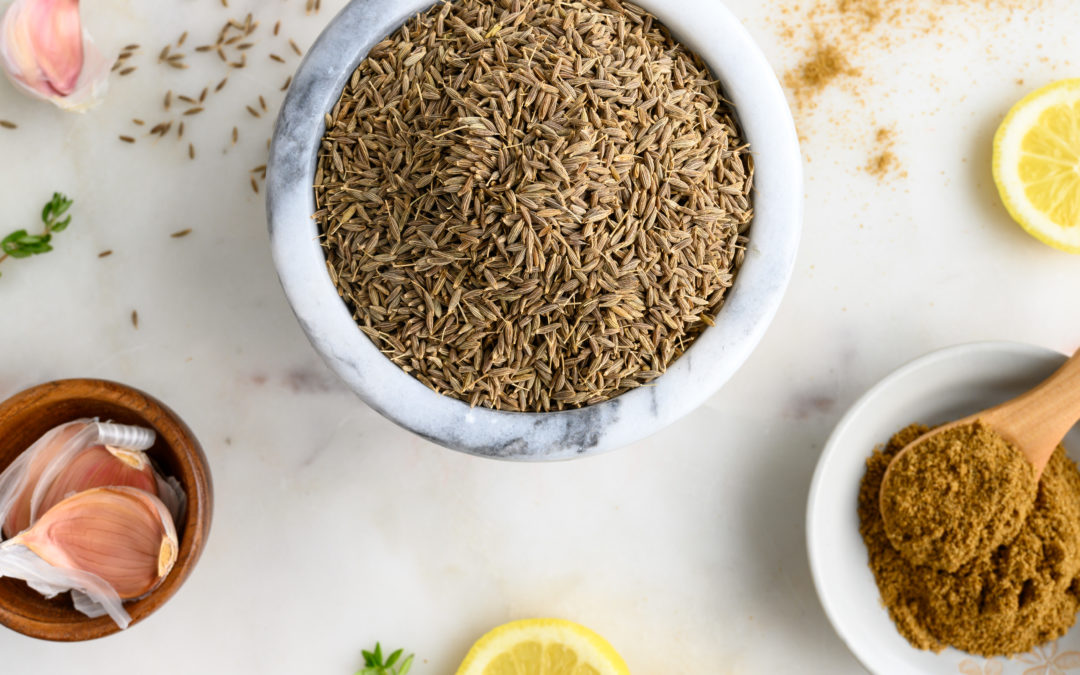From spicy Latin dishes to savory Indian and Middle Eastern cuisine, cumin knows no borders. Although it is a small, plain seed, it packs a bold flavor that perfectly complements a variety of dishes. From curries to cheeses to sauces, cumin is a staple of many international favorites. and is widely enjoyed across the world.
In this blog, we’ll showcase the flavor, history, and common uses of cumin. We will also discuss how the manufacturing and treatment of it directly impacts quality and consumer safety.
Flavor
Cumin is often described as boasting a robust flavor profile that is warm and earthy with a spicy bittersweet aroma and light citrus overtones. Cumin is commonly compared to caraway seeds as a slightly spicier, and bitter alternative. Also possessing flavor similarities to its more expensive counterpart, Black Pepper, Cumin was often used (and bartered for) as a household spice and Black Pepper substitute in ancient Rome.
Appearance
Cumin seeds are a pale, tan-green color with an oblong shape (like a tapered cucumber). They have nine raised ridges and oil canals around the perimeter that mark the seed length-wise. Seeds measure between ⅛ – ¼ inches long.
Unsurprisingly, cumin seeds are often mistaken for caraway seeds due to their strong resemblance and similar aroma. The most noticeable difference between the two is that cumin seeds are lighter in color and are covered in very fine, barely-visible, bristles.
History
Cumin is an ancient spice that was first made popular by the Greeks and Romans. In early times, it was tied to superstitions, utilized in home remedies, and was employed in religious and political ceremonies.
Peaking in popularity in Europe and Britain in the Middle Ages, cumin slowly lost prevalence in that market. However, it maintained stability in the Middle East, North Africa, and India as an essential spice in national dishes such as couscous, bahārāt, chutney, and curry.
In recent times, the popularity of cumin has grown in the United States through the influence of Latin American cuisine. It is a staple seasoning south-of-the-border as a key ingredient in chili powder which is used generously in traditional dishes. In the United States, the most common use of it is in Mexican and Indian food.
Origins
Cumin seed is a tiny dried fruit that comes from a small Umbelliferae plant belonging to the same plant family as parsley, carrots, dill, and caraway. This plant is native to the Mediterranean region and Egypt, and is cultivated along the Western Mediterranean through the Middle East and India.
Because cumin is durable and adaptable to both warm and cool climates, it is easily grown around the world. That said, the popular spice’s largest producer and consumer is India.
Quality

Pacific Spice is dedicated to producing the highest quality spices and the two most important attributes of high quality cumin are flavor and cleanliness.
Flavor
Although color and flavor vary between regions, cumin flavor is less impacted by origin and more impacted by oil content.
The greater the oil content, the more flavorful the cumin
Cumin seed ranges from 2-5% essential oil content, we source prime-quality seed that ranges from 3-5% to secure intense flavor. It’s important to note that volatile oils dissipate over time and cause it to lose flavor. To guarantee our product stays fresher for longer, we import whole cumin and grind the seeds in-house.
Cleanliness
Because we hold ourselves to the highest standard of quality and safety, we process and clean our product locally. Under our control, we ensure that our strict manufacturing methods far exceed the quality standards of U.S. food manufacturers. This results in product that is pure, free of contaminants and adulterants.
Here’s what quality means for consumers: When you purchase high quality spices, you’re promised…
- Consistent taste, color, and texture.
- Purity and cleanliness that exceeds U.S. standards.
- Product freshness and longevity
- Bold flavor that offers more for less
It’s a win for everyone.
Sourcing & Safety
Not all cumin is equal, and it’s important to know where yours is produced to ensure that it’s free of allergens, adulterants, and impurities. There were over 100 spice-related recalls in the last 5 years, including a widespread recall in 2015 due to peanut contamination. When the FDA issued an advisory, we assured our customers of the purity of our product because we produce our cumin (and all of our spices) in-house.
As this example illustrates, It’s important to only use spices from a reliable spice manufacturer that instills confidence in quality and safety
At Pacific Spice Company, we source our cumin as whole seeds from India and Turkey. We clean and process all of our products in-house to maintain the highest standards for quality and safety.
Storing
Cumin should be kept in a tightly sealed container in a cool, dark, dry place. Every precaution should be taken to protect it from dampness and excessive heat.
- Dampness: Water can ‘cake’ and ruin the product. For this reason, we suggest keeping it off the floor and away from outside walls.
- Heat: Heat will cause cumin to lose flavor quickly by dissipating the essential oils and drying it out. Keep it away from direct sunlight and in temperatures below 70°F.
Remember to always mark your spices with the date of delivery and to use the oldest stock first. Under good storing conditions, cumin should maintain flavor and quality for about 1 year.
Uses

Cumin is a versatile spice that is typically used in savory dishes. Because of its strong flavor profile, it can easily season a dish on its own, but it also complements a variety of other spices. That’s why you’ll commonly find it in traditional spice blends like these:
- Indian Curry Spice: Cumin + turmeric + cayenne + coriander
- Latin Chili Spice: Cumin + chili powder + garlic powder + oregano
Cumin can also be added to soups, bean dishes, root vegetables, sauerkraut, meat marinades, cheeses, breads, and savory sauces.
We encourage you to use your imagination and find your own favorite uses for this long-celebrated ancient spice.
We’re here to make all your flavor dreams come true, so follow us on Instagram for digestible education and flavor inspiration.

